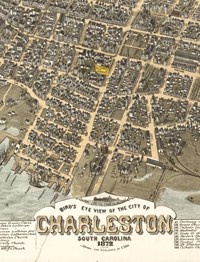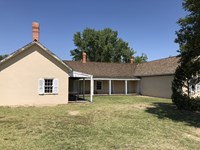- Santa Fe National Historic Trail (20)
- César E. Chávez National Monument (17)
- El Camino Real de Tierra Adentro National Historic Trail (16)
- Homestead National Historical Park (13)
- Valles Caldera National Preserve (13)
- Manhattan Project National Historical Park (12)
- Boston National Historical Park (11)
- Old Spanish National Historic Trail (11)
- Tule Springs Fossil Beds National Monument (11)
- Show More ...
- Geologic Resources Division (11)
- National Historic Landmarks Program (10)
- Archeology Program (8)
- National Register of Historic Places Program (7)
- Wildland Fire Program (5)
- Fire Management (4)
- National Center for Preservation Technology and Training (4)
- National Heritage Areas Program (4)
- Park Cultural Landscapes Program (4)
- Show More ...
Showing 472 results for Laborer ...
Rosina Corrothers Tucker
- Type: Person
A prominent advocate for labor and civil rights, Rosina Corrothers Tucker played an integral role in the creation of the Brotherhood of Sleeping Car Porters and its International Ladies Auxiliary. She served as a leader in the Auxiliary for several decades and played a role in planning the March on Washington movement in the 1940s.
Pollinator Garden
Oak Ridge Wayside: The Hutments
- Type: Article
Margaret is one of Hampton’s longest serving volunteers and has seen nearly 40 years of change in the park, its visitation, and how the site’s collection of historic structures and over 45,000-object collection are used to interpret the stories of those who lived and labored at the once 25,000-acre plantation.
Marching for Justice in the Fields
- Type: Article
The farm workers who marched from Delano to Sacramento represented the large, seasonal labor force, composed overwhelmingly of people of color, whose labor made California’s thriving agricultural industry possible. Although their labor produced fortunes from the soil, they were subjected to poor wages and working conditions. This article is an introduction to the issues that motivated the Delano Grape Strike and the 1966 march.
Thirty Years of Farmworker Struggle
- Type: Article
Labor organizing has a long history in agriculture. Between 1930 and 1960, diverse groups of farmworkers in California struggled to form unions and to take collective action for better wages and working conditions. This article highlights the political and legal structures that made organizing in the fields especially difficult.
Labor Reforms of the Port Royal Experiment
- Type: Article
Paying wages to the formerly enslaved people served two purposes for the government officials developing the Port Royal Experiment. It helped to provide a solution of where people should live. Wages also began to put cash into the hands of people who had toiled this land for generations. Many sought to use that cash to secure that land for themselves.
Series: The Port Royal Experiment
- Type: Article
In the fall of 1861 after the Battle of Port Royal, the US military came ashore around Beaufort and found thousands of now formerly enslaved people in control of the region. The military had no real plan yet for what to do with these people or even their legal status. Newly freed Black South Carolinians were active participants. They demanded access to programs to support labor reforms, land redistribution, quality education, and military service.
Samuel Henry Patterson
Obie Bryant Rice
- Type: Person
John Small freed himself, his wife Susan, and their infant son Phillip during a dangerous escape aboard the Confederate steamer, Planter. As the ship’s engineer, John was instrumental in the success of the mission in which he and pilot Robert Smalls brought a total of sixteen men, women and children out of slavery and into freedom.
- Type: Article
On June 24, 1973, thirty-two people were killed when a meeting of Metropolitan Community Church (MCC) members and friends was attacked by arson in this New Orleans lounge. In the aftermath of the horrific event, survivors and church members suffered rejection and homophobic ridicule from police, community members, and neighboring churches.
- Type: Article
Albert Cashier was born in 1843. He was assigned female at birth and given the name “Jennie Hodgers,” but at a young age began to dress as a boy and assumed a male identity. According to stories, Cashier’s step-father, short on money, dressed him as a boy to get a job. After Cashier’s mother died, he moved to Illinois and worked as a laborer, farmhand, and shepherd.
Henry Gooden
Boggsville Historic Site
- Type: Place
Boggsville was once a stage stop on the Santa Fe Trail. Key businesses there were trading stores, owned by Thomas O. Boggs (built in 1862) and John W. Prowers (built in 1867). Boggsville became the seat of Bent County in 1870, but the coming of the railroad to nearby Las Animas brought about the town's downfall by 1880.
- Type: Place
Frances Perkins was by far one of the most important women of her generation. In 1932, her long and distinguished career as a social worker and New York State Industrial Commissioner took an important turn for American women, and for the country as a whole, when she was appointed U.S. Secretary of Labor, the first woman ever to be included in a president's cabinet.




















